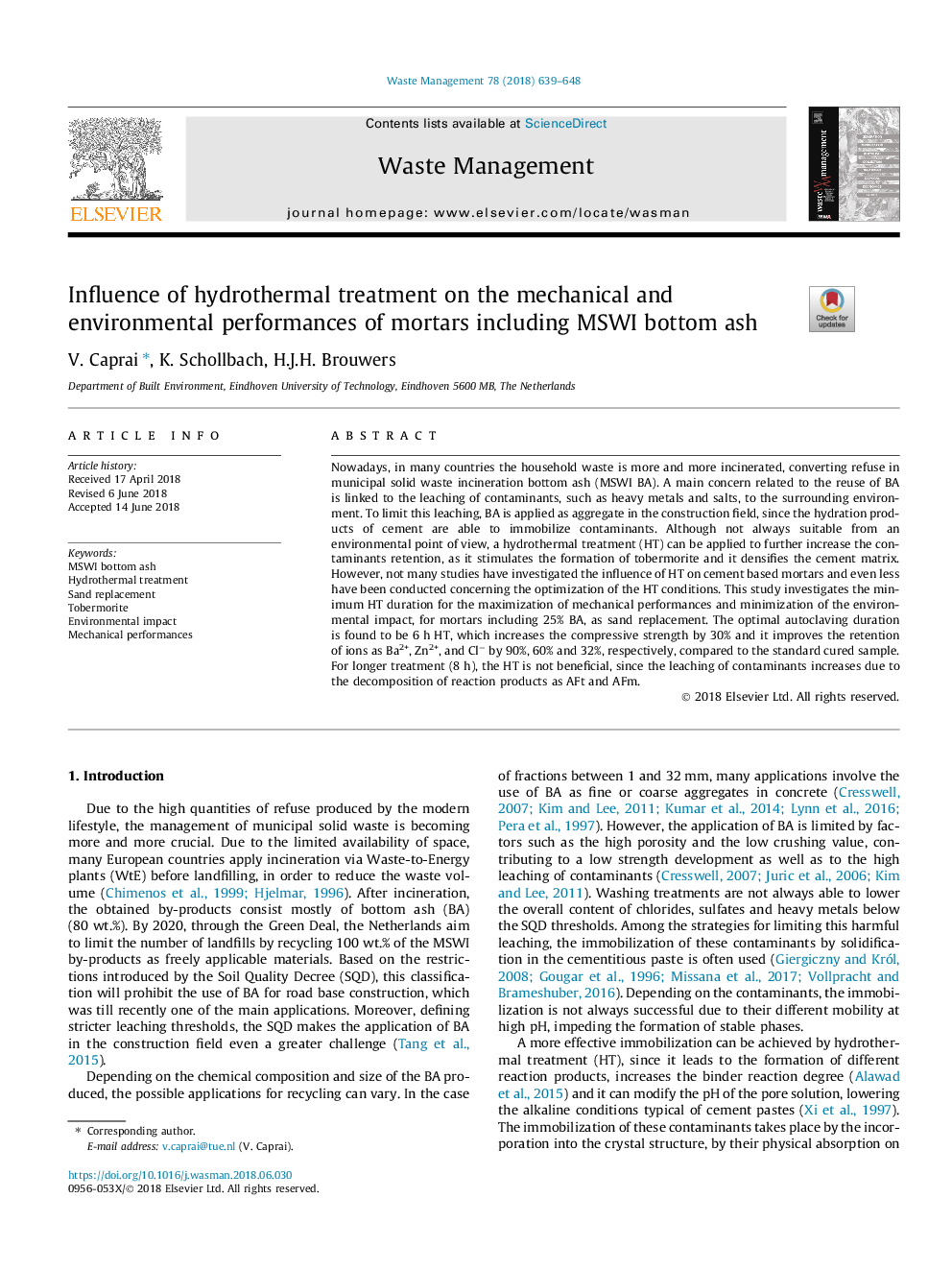| Article ID | Journal | Published Year | Pages | File Type |
|---|---|---|---|---|
| 8869402 | Waste Management | 2018 | 10 Pages |
Abstract
Nowadays, in many countries the household waste is more and more incinerated, converting refuse in municipal solid waste incineration bottom ash (MSWI BA). A main concern related to the reuse of BA is linked to the leaching of contaminants, such as heavy metals and salts, to the surrounding environment. To limit this leaching, BA is applied as aggregate in the construction field, since the hydration products of cement are able to immobilize contaminants. Although not always suitable from an environmental point of view, a hydrothermal treatment (HT) can be applied to further increase the contaminants retention, as it stimulates the formation of tobermorite and it densifies the cement matrix. However, not many studies have investigated the influence of HT on cement based mortars and even less have been conducted concerning the optimization of the HT conditions. This study investigates the minimum HT duration for the maximization of mechanical performances and minimization of the environmental impact, for mortars including 25% BA, as sand replacement. The optimal autoclaving duration is found to be 6â¯h HT, which increases the compressive strength by 30% and it improves the retention of ions as Ba2+, Zn2+, and Clâ by 90%, 60% and 32%, respectively, compared to the standard cured sample. For longer treatment (8 h), the HT is not beneficial, since the leaching of contaminants increases due to the decomposition of reaction products as AFt and AFm.
Keywords
Related Topics
Physical Sciences and Engineering
Earth and Planetary Sciences
Geotechnical Engineering and Engineering Geology
Authors
V. Caprai, K. Schollbach, H.J.H. Brouwers,
